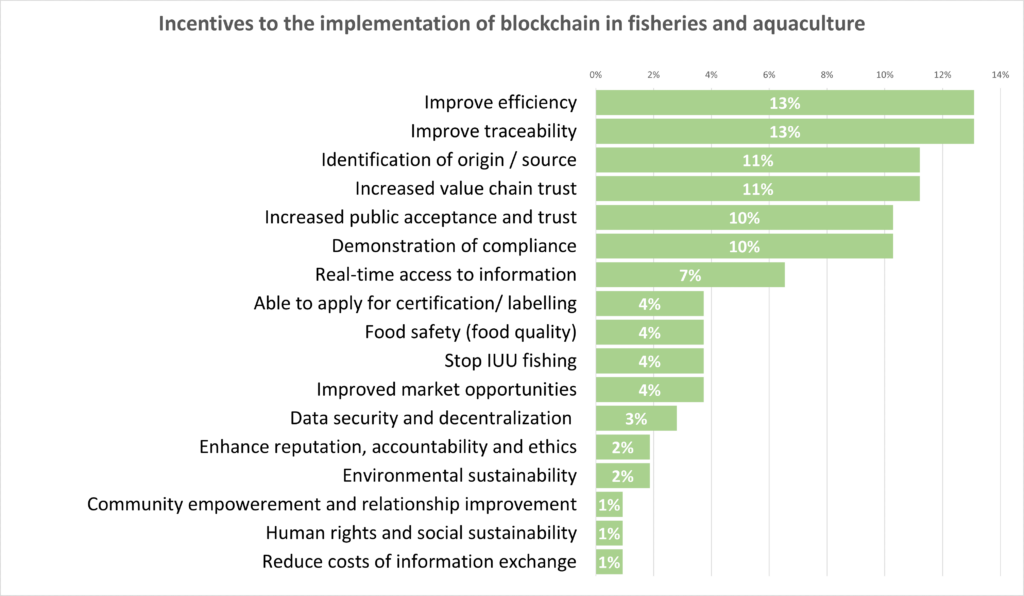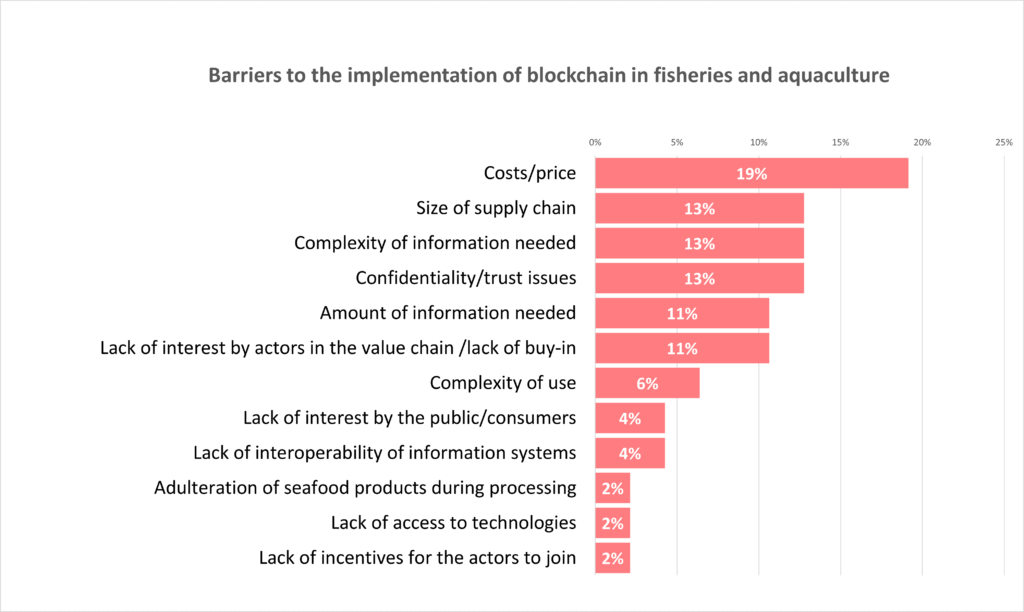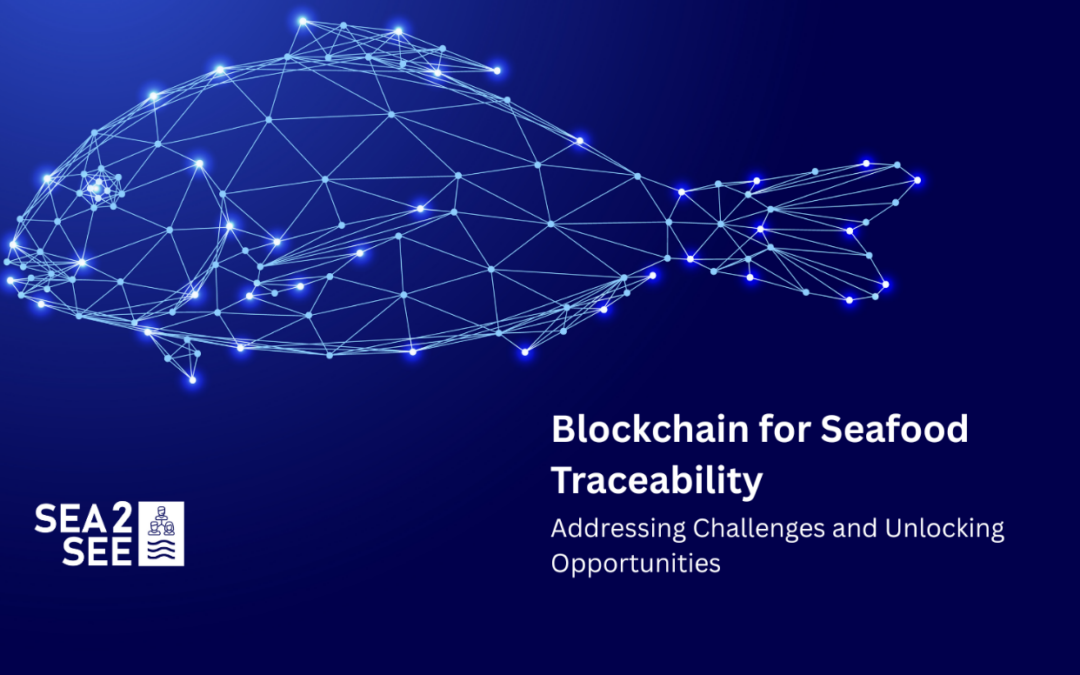The Sea2See project has been investigating how blockchain technology can enhance seafood traceability. Deliverable 1.2 identifies the main barriers and incentives for blockchain adoption in fisheries and aquaculture, providing valuable insights for stakeholders.
To assess the challenges and opportunities of blockchain traceability, a systematic literature review was conducted, and 15 relevant publications were identified and analysed focusing on blockchain applications in seafood value chains. The research categorized 17 incentives and 12 barriers to implementation, providing a structured approach to understanding blockchain’s potential impact on the seafood sector. Additionally, six case studies were reviewed to illustrate real-world applications and sector-specific challenges.
Key Findings
Blockchain has the potential to transform seafood supply chains by ensuring transparency, security, and efficiency. The study identified 17 incentives for its implementation , namely: improves efficiency (e.g., time of transactions); improves traceability; allows for the identification of origin/source of seafood products; increases value chain trust; increases public acceptance and trust; allows to demonstrate compliance; allows for real-time access to information; allows to apply for certification/labelling; improves food safety (food quality); helps minimize IUU fishing; improves market opportunities; improves data security and decentralization; enhances reputation, accountability and ethics; leads to environmental sustainability; empowers communities and improves relationships; contributes to improve human rights and social sustainability; and reduces the cost of information exchange.
On the other hands, a total of 12 challenges related with the use of this technology in seafood were identified, such as: the cost/price of implementation; the size of the supply chains; the complexity and amount of information needed; confidentiality/trust issues; the lack of interest by actors in the value chain/lack of buy-in; the complexity of use of this technology; the lack of interest by the public/consumers; the lack of interoperability of the information systems; the adulteration of seafood products during processing; the lack of access to technologies and lack of incentives (for the actors) to join the system.
The report also presents six examples, from around the world, of seafood supply chains where blockchain was implemented, describing in detail the opportunities and challenges to implementing this technology. Since different sectors face different challenges and incentives, we present two examples of blockchain in small-scale fisheries (Provenance, FLAGCHAIN), two in large-scale fisheries (Fiji Tuna Supply Chain Solution, Fishcoin), and two in aquaculture (Sustainable Shrimp Partnership, IBM Blockchain Transparent in Norway).
Conclusions and Future Steps
We concluded that most incentives and challenges to the implementation of blockchain are common to the fisheries and aquaculture sectors. However, some incentives are specific to the fisheries sector (reducing/stopping IUU fishing, enhancing reputation, improving accountability and ethics, enhancing community empowerment and relationships, and improving human rights and social sustainability), and some are specific to the aquaculture sector (improving market opportunities, and reducing costs of information exchange). The same was observed in terms of barriers, with some being specific to the fisheries sector, such as the size of the supply chain, the lack of access to technologies, and the lack of incentives for the actors to join blockchain traceability systems.
The type of blockchain technology put in place should be adapted to the specific fishery or aquaculture value chain and level of traceability aimed to achieve, so that a fair, trustful and transparent value chain can be efficiently implemented.


Contributor: University of Aveiro

